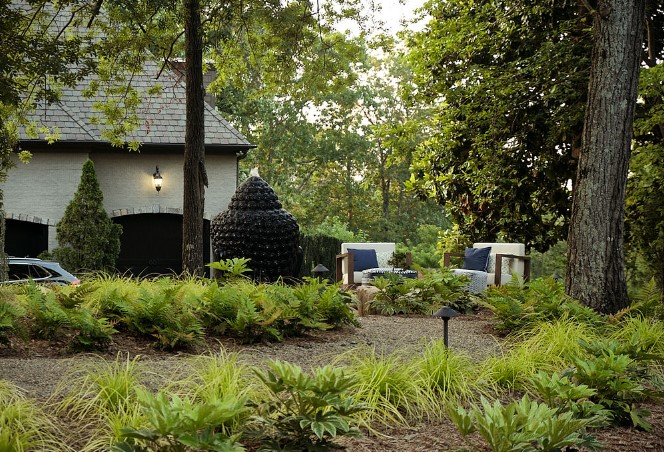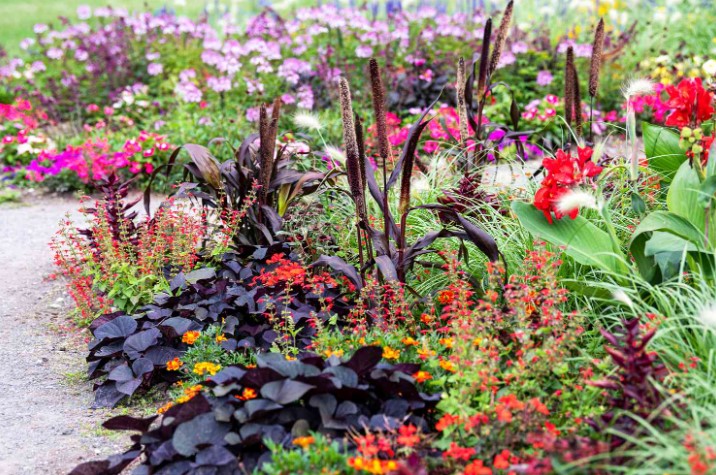
Creating an exceptional landscape requires a blend of creativity, careful planning, and an understanding of the environment. Whether you’re a seasoned gardener or a novice, transforming your outdoor space can enhance the beauty of your home and increase its value. Here are some innovative landscaping ideas to help you craft a stunning and functional outdoor haven.
Sustainable Landscaping: Eco-Friendly Solutions
Sustainability is at the forefront of modern landscaping. Incorporating eco-friendly practices not only benefits the environment but also reduces maintenance costs.
Native Plant Selection
Choosing native plants is a sustainable option as they are adapted to the local climate and soil conditions. These plants require less water, fertilizer, and pesticides, making them low-maintenance and eco-friendly. Examples include:
- Wildflowers like Black-eyed Susans and Coneflowers
- Shrubs such as Serviceberry and American Hazelnut
- Trees like Red Maple and Eastern Redbud
Rain Gardens
A rain garden is a shallow, planted depression designed to absorb rainwater runoff from roofs, driveways, and other impervious surfaces. Rain gardens reduce erosion, improve water quality, and provide habitat for wildlife. Key plants for rain gardens include:
- Blue Flag Iris
- Swamp Milkweed
- Cardinal Flower
Hardscaping Elements: Structure and Style
Hardscaping refers to the non-plant elements of landscaping, such as paths, walls, and patios. These features add structure and style to your garden.
Stone Pathways
Stone pathways offer both functionality and aesthetic appeal. They guide visitors through your garden and can be made from various materials such as gravel, flagstone, or cobblestone. Consider using permeable materials to allow water to filter through and reduce runoff.
Retaining Walls
Retaining walls serve both practical and decorative purposes. They help manage sloped areas and prevent soil erosion. Materials for retaining walls include:
- Natural stone for a rustic look
- Concrete blocks for durability
- Timber for a natural appearance
Outdoor Living Spaces
Creating outdoor living spaces extends your home’s living area and allows you to enjoy nature comfortably. Key elements to consider are:
- Patios and Decks: Use materials like wood, composite, or stone.
- Outdoor Kitchens: Include grills, countertops, and seating areas.
- Fire Pits: Great for evening gatherings and adding warmth.
Water Features: Tranquil and Attractive
Water features add a sense of tranquility and movement to your landscape. They can range from small fountains to elaborate ponds.
Fountains
Fountains are versatile and can be placed in various locations, such as patios, garden centers, or as a focal point. They come in many styles, including:
- Tiered Fountains: Classical elegance
- Bubbling Fountains: Modern and minimalistic
- Wall Fountains: Space-saving and decorative
Ponds and Water Gardens
A pond or water garden can create a serene environment and attract wildlife like birds and frogs. Ensure you include aquatic plants such as:
- Water Lilies
- Lotus
- Cattails
Waterfalls
Waterfalls can be integrated into ponds or stand alone. They add a dynamic element to your landscape and can be designed to fit various garden styles, from naturalistic to contemporary.
Lighting: Enhancing Ambiance and Safety
Landscape lighting enhances the beauty of your garden while providing safety and security. Consider these lighting options:
Pathway Lighting
Pathway lights illuminate walkways and guide guests safely through your garden. Options include solar-powered lights, low-voltage lighting, and LED lights.
Accent Lighting
Accent lights highlight specific features like trees, sculptures, or architectural elements. Use spotlights or uplights to create dramatic effects.
String Lights
String lights add a whimsical and cozy ambiance, perfect for patios and outdoor dining areas. Choose weather-resistant lights for durability.
Edible Landscaping: Beauty and Functionality
Edible landscaping combines aesthetics with practicality by incorporating food-producing plants into your garden design.
Herb Gardens
Herb gardens are easy to maintain and can be planted in small spaces or containers. Popular herbs include:
- Basil
- Rosemary
- Thyme
Fruit Trees and Shrubs
Integrating fruit trees and shrubs into your landscape provides fresh produce and adds visual interest. Consider planting:
- Apple trees
- Blueberry bushes
- Grape vines
Vegetable Gardens
Vegetable gardens can be both productive and beautiful. Use raised beds or interplant vegetables with ornamental plants for a diverse and attractive garden. Examples of visually appealing vegetables include:
- Rainbow Chard
- Purple Kale
- Heirloom Tomatoes
Seasonal Interest: Year-Round Beauty
Achieving a garden with year-round interest requires careful plant selection and planning.
Spring Blooms
Spring brings vibrant colors and new growth. Consider planting:
- Tulips
- Daffodils
- Magnolias
Summer Lushness
Summer gardens are lush and full. Key plants include:
- Lavender
- Hydrangeas
- Roses
Autumn Foliage
Autumn offers stunning foliage and rich colors. Ideal plants are:
- Maple trees
- Chrysanthemums
- Asters
Winter Structure
Winter gardens rely on structure and texture. Evergreen plants and shrubs are perfect for this season:
- Holly
- Boxwood
- Pine trees
Conclusion
Transforming your outdoor space with innovative landscaping ideas not only enhances the aesthetic appeal of your home but also creates a functional and enjoyable environment. By integrating sustainable practices, hardscaping elements, water features, lighting, edible plants, and seasonal interest, you can create a stunning landscape that stands out year-round. Embrace these ideas and watch your garden flourish into a breathtaking sanctuary.
